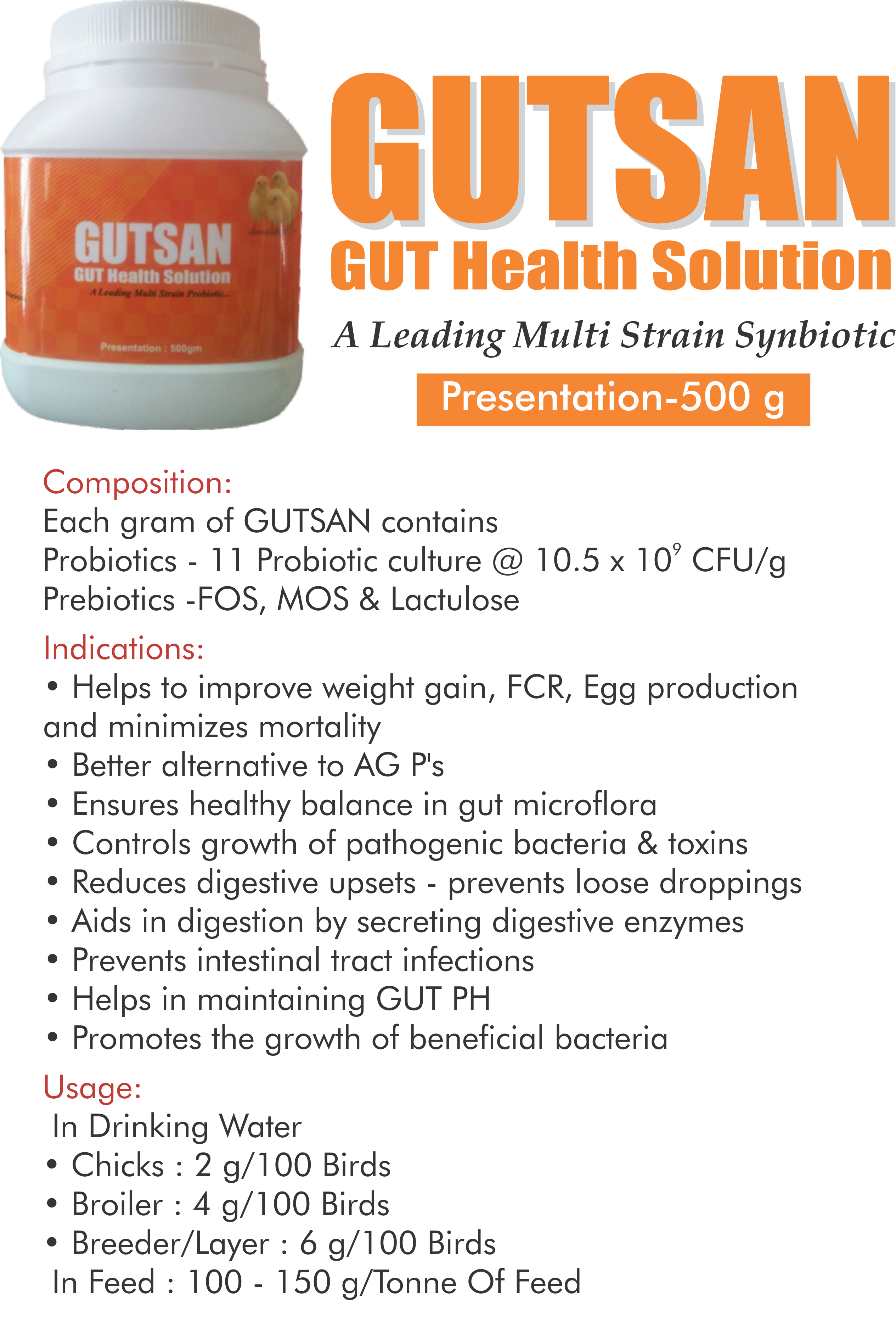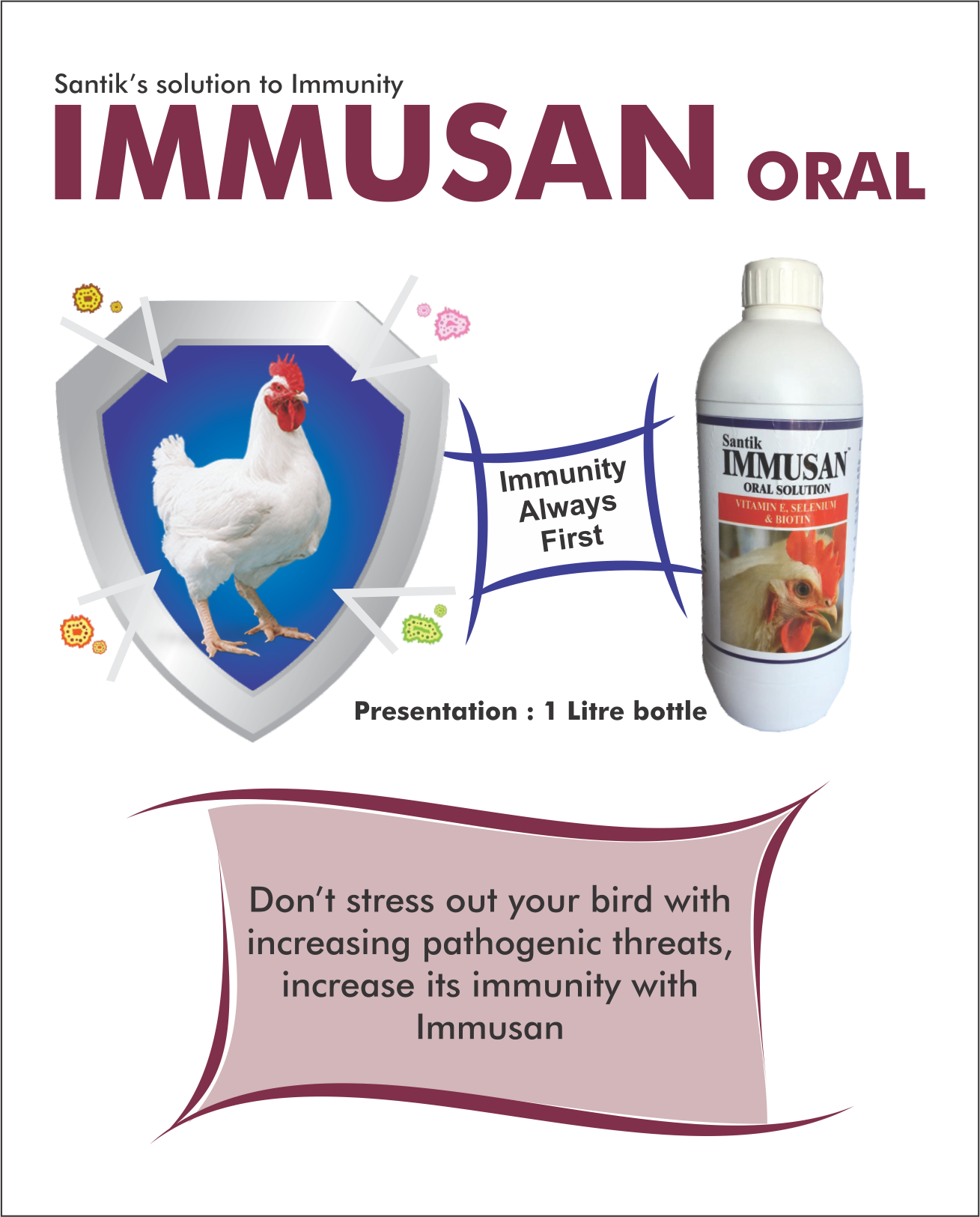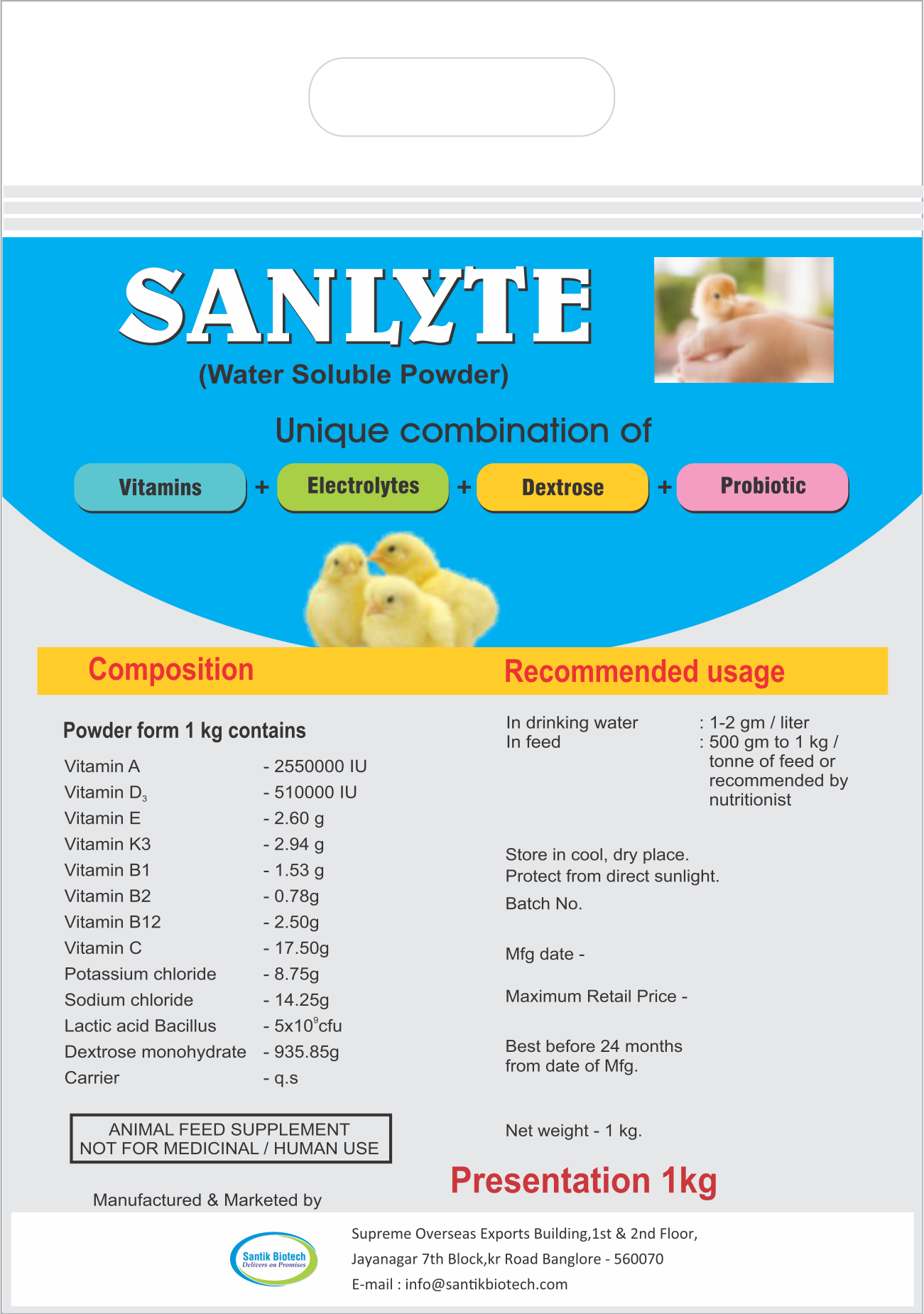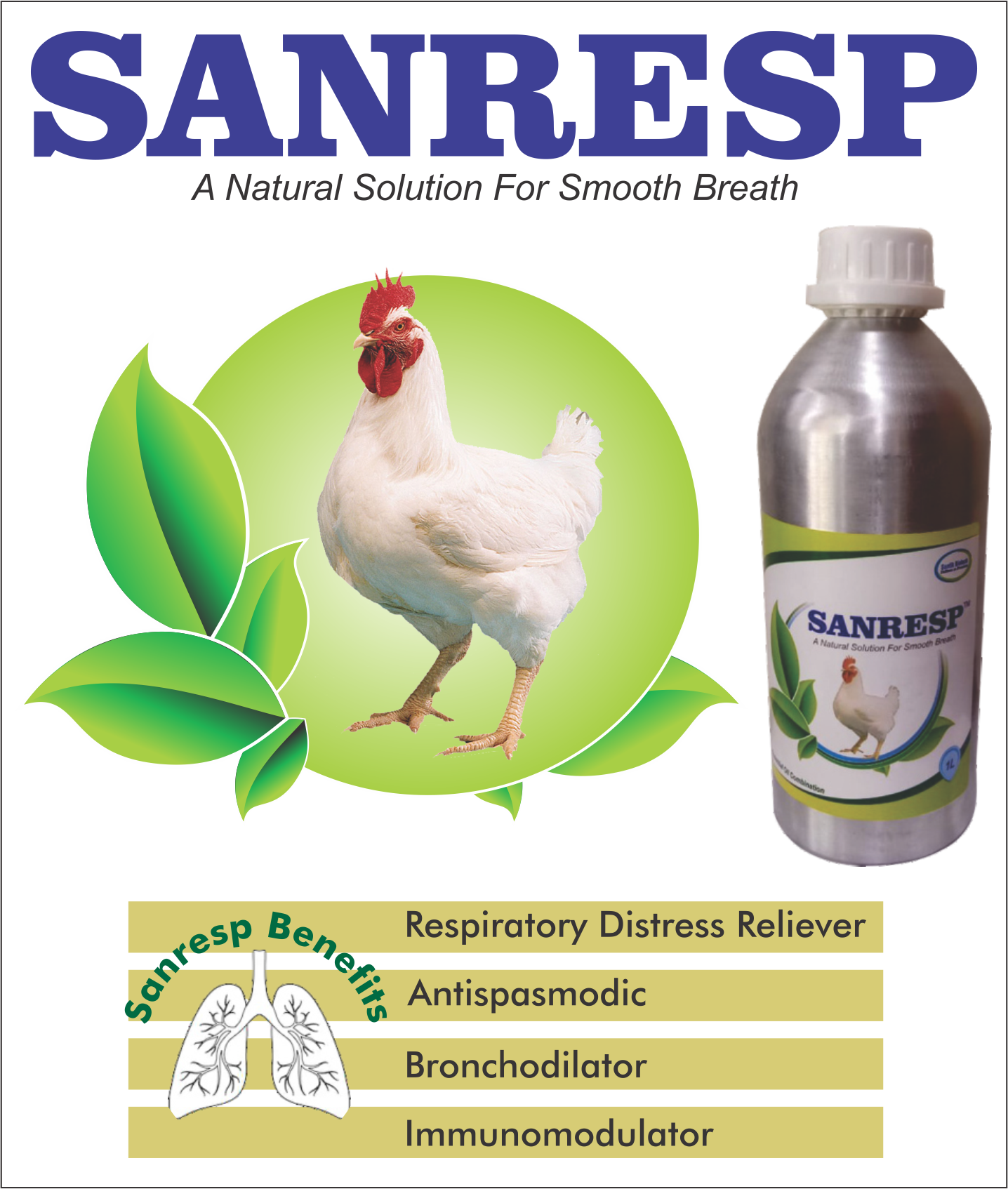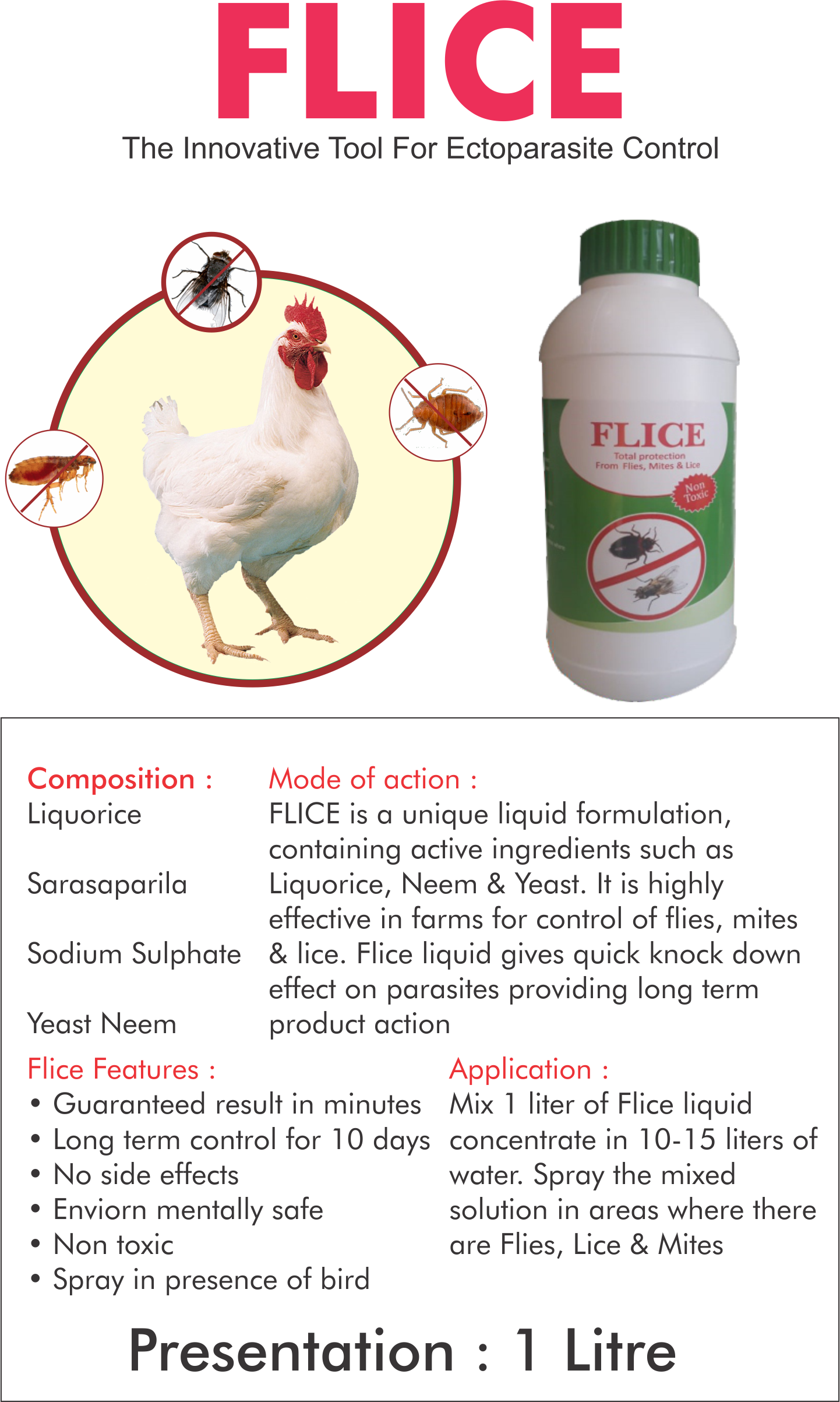
Parasites are creatures that live on, in or around chickens. They can cause damage directly by disturbing the chickens and affecting their growth and egg production. They can also spread certain diseases. Parasites can occur inside the chicken (internal parasites e.g. worms) or on the outside of the chicken (external parasites e.g. lice, flies & mites). Birds get infested with these parasites when new chickens are brought on to the farm and by contact with each other
Lice : Chickens are mainly infested with biting lice. These can irritate chickens and as a result they do not grow well and produce fewer eggs. Biting lice spend their entire lives on chickens and can be found on the skin around the vent and on the breast and thighs. They feed on skin and feathers
Mites : There are different types of mites that affect chickens. They differ from lice in that they feed on the blood of chickens. As a result chickens do not grow very well. There are 3 important types of mites in chickens as
Red Mites : This are the large mites. It lives in cracks and crevices of chicken houses and feeds mainly at night, hence making it difficult to find during the day
Northern Fowl Mites : This are small mites, stays on the chicken all the time. When there are many of these mites present they can cause blackening of feathers because of mite droppings and mite eggs
Burrowing Mites : This mites lives on the chicken. It causes itching and even loss of feathers and/or excessive scaliness, which may lead to thickening and even deformation of the legs. It is important to know the differences between mites because they have different methods of control
Flies : Flies are usually a source of irritation to chickens, farmers and neighbours. They occur in warm places. They multiply in the bodies of dead animals and in the droppings of chickens
